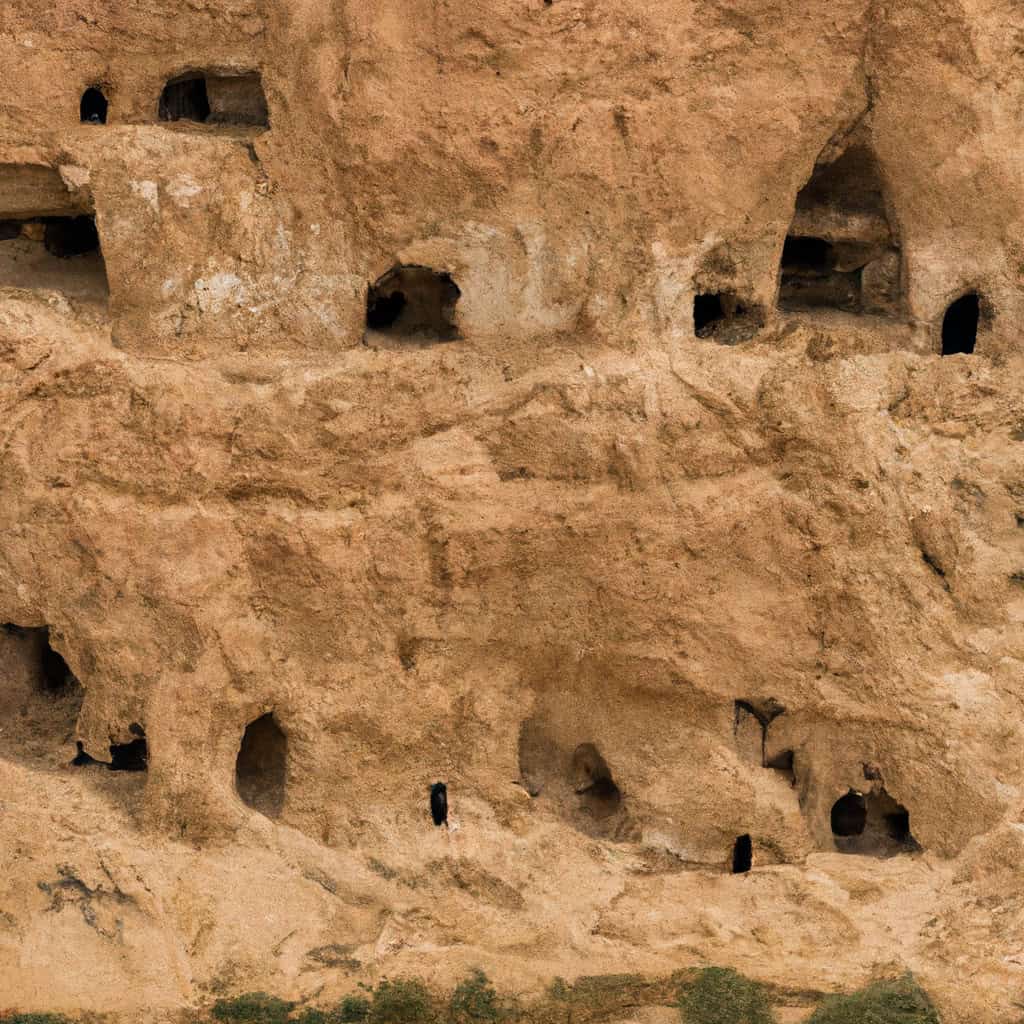Kakrak Caves in Bamiyan, is one of many fascinating sites that both foreign visitors and local tourists can explore while they visit Afghanistan and exploring Bamiyan Province. This stunning geological formation, tucked within the scenic cliffs and valleys, offers not just a window into our planet’s natural history, but a glimpse into the ancient civilizations that once thrived here. Shrouded in the mist of time, the Kakrak Caves breathe the air of an era long gone, with human inhabitance dating back thousands of years.
These caves were once inhabited by Buddhist monks who left their mark in stunning, delicate artwork and carvings that have withstood the cruel march of time. With both cultural and historical treasures embedded within, the Kakrak Caves have borne silent testimony to Afghanistan’s rich, multi-faceted history – a haven in the folds of the Earth, preserving tales of human ingenuity and spiritual pursuits for the modern traveler to discover.
Kakrak Caves Most Important Events
- The Flourish of Buddhism: Around the 2nd century AD, the Kakrak Caves became a centre of Buddhism in Afghanistan. This period witnessed the transformation of this natural cave system into a complex network of monastic cells and devotional spaces adorned with exquisite murals and carvings.
- Rediscovery in the 20th Century: The caves, forgotten for centuries, were rediscovered in the 1930s. This triggered an era of archaeological exploration and study that continues to contribute valuable insights into the region’s cultural and religious past.
- Restoration Initiatives: The fall of the Taliban in 2001 sparked international efforts to restore the destroyed artworks and historical relics within the caves. Conservation efforts have been ongoing, committed to preserving this heritage site for future generations.
History of Kakrak Caves in Bamiyan
Inhabited since the 1st century AD, the caves served as dwellings for Buddhist monks who ventured into these remote mountains seeking spiritual solitude. Between the 2nd and 7th centuries AD, the Kakrak Caves were transformed into a thriving monastic complex under the Kushan Empire, deeply influenced by Greek-Buddhist artistic traditions.
In the heyday of the Silk Road trade, the caves became a hub of cultural exchange, with travelers and merchants from distant lands leaving their mark. This period saw the creation of stunning art within the caves – mesmerizing frescoes, murals, and carvings that reflected a harmonious blend of various artistic traditions.
The invasion of Islam, however, marked a period of decline for Buddhism in the region. Despite expulsion and pillage, the caves persisted, albeit forgotten – a relic of a bygone era. It wasn’t until the 1930s that the world rediscovered the Kakrak Caves, unveiling their historical wealth to a new millennium.
Why It’s Important to Afghan History
The Kakrak Caves play an integral role in Afghan history. Representing an era when Buddhism flourished in the region, they attest to Afghanistan’s multicultural heritage, a time when diverse ideas and beliefs coexisted harmoniously under the craggy cliffs of Bamiyan.
The caves also serve as a poignant symbol of Afghan resilience. Despite relentless wars, invasions, and natural disasters, they have withstood the test of time, showcasing the nation’s unwavering commitment to preserving its rich history.
Why to Visit Kakrak Caves
Apart from their historical draw, the Kakrak Caves are a sight to behold for their architectural beauty and their scenic location amid the rugged landscape of Bamiyan. Walking through the cave network, one is transported to a different era, with spectacular murals, intricate carvings, and atmospheric chambers breathing life into stones.
Surrounding the caves, the terrains of Bamiyan are a nature-lover’s paradise – snow-kissed peaks, sprawling meadows, and azure lakes making the journey as enthralling as the destination.
- The mesmerizing ancient murals and carvings.
- The tranquil scenic beauty surrounding the cave network.
- The intricate network of caves remarkably preserved.
- The opportunity to delve into Afghanistan’s multi-hued past.
- The experience of walking through history.
Located in the Bamiyan Province, access to the caves requires a challenging trek, adding a sense of adventure. The best time to visit is during the summer months, when the roads are clear, and the vistas of Bamiyan are at their finest.
Cultural & Tourist Significance
The Kakrak Caves hold immense cultural and tourist significance. As a surviving testament to the flourishing of Buddhism in Afghanistan, they offer invaluable insights into the region’s historical and cultural past.
From a tourist perspective, the enchantment of exploring an ancient monastery, adorned with regal murals and carvings, is something truly unparalleled. Coupled with the enigmatic aura of the caves and the breathtaking vistas, the spirit of the place resonates with every traveler.
Moreover, as the ongoing restoration efforts continue to unravel lost arts and hidden chambers, the Kakrak Caves promise many more exciting discoveries in the years to come.
Interesting Facts
Deep within the Kakrak Caves, archaeologists discovered one of the world’s earliest oil paintings, dating back to the 7th century AD. This revolutionary find turned the tables of art history, pushing back the origins of oil painting by several centuries.
Another lesser-known fact is that these caves once housed a large Buddha statue, similar to the famous Bamiyan Buddha. Sadly, it was destroyed during the Taliban era, but remains a symbol of the vibrant spiritual history that these caves represent.
Lastly, legend has it that Kakrak Caves were part of a vast, interconnected network of tunnels and caves extending across Afghanistan and even beyond. While much of this network remains unexplored, the possibility alone stirs the imagination of every history buff and adventurer.

